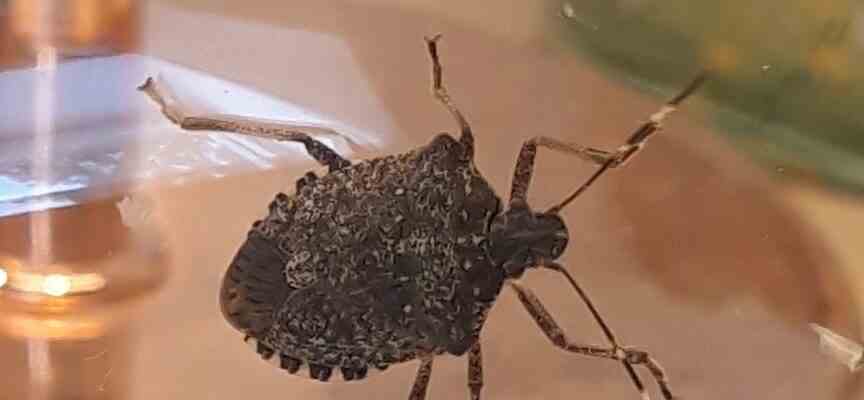Some have tomatoes and peppers in the raised bed or cucumbers in the greenhouse, others stately orchards. Regional foods come from many corners and niches. No long delivery routes, harvested crisp and ready to eat. This pleasure could soon be diminished, an invasive species of insect wants to eat. It is already there, willing to reproduce and has no natural enemies. There is already considerable crop damage in South Tyrol, Austria and Switzerland. They are now also crawling out of their winter quarters in the district of Erding. And there are surprisingly many.
Now they are awake and agile again, at temperatures of over ten degrees, the “marbled stink bugs” leave their winter quarters and start eating. They are easily confused with the native “grey garden bug”, but the species of bug imported from Asia is a nightmare in fruit and vegetable cultivation. As early as 2019, the South Tyroleans reported more than 500 million euros in damage to fruit and vegetable cultivation. In Austria, too, it has already developed into a plague. The “marbled stink bug” sucks sap from the leaves and fruits of trees and shrubs. With the saliva, an enzyme gets into the plant tissue when sucking, which causes stains. In vegetables, including peppers, cucumbers and tomatoes, as well as in fruit such as apples, pears, cherries and plums, they leave behind brown suction damage, sunken areas, necrotic spots and deformations. In Germany it is currently spreading. There is a hotspot around Munich, and the spread in the districts of Erding and Freising is only just beginning.
It is assumed that this species of bug was introduced with fruit crates from China. The speed of propagation is rapid: the first detection in Europe was recorded in 2004. In Germany, it was first found in 2011 in Konstanz on Lake Constance. In the meantime it has spread over large parts of southern Germany. There is no clear spread front, but rather punctiform infestation foci that spread locally. The Bavarian State Research Center for Agriculture in Freising has already launched a call for suspicious bugs to be sent in or photographed. She has also posted a map of what has been found so far. The whole of Munich is a large patch of red dots on it, with a wedge-shaped outlier towards Starnberg and another wedge across Erding and Freising towards Landshut.
State Institute for Agriculture has created a map with localities
The horticultural associations know from the specialist literature that something is coming their way, but the bug doesn’t seem to have arrived in the gardens or just not been recognized. At the Ost- und Gartenbauverein Sankt Wolfgang, for example, chairman Rudi Brand says they are “listening” but no damage is yet known to the members’ gardens. However, based on previous experience with this bug, it is probably only a matter of time. Brand compares this to the invasion of box tree moths, which caused massive damage to the district’s gardens and cemeteries in 2019. The year before they were hardly noticed, and in 2019 they were suddenly everywhere.
The conditions of the bug are given for such a scenario: Firstly, it looks confusingly similar to the native “gray garden bug” and is therefore often overlooked in areas where it has already gained a foothold. Above all, the underside of the abdomen is significantly lighter than that of the “grey garden bug”, which also has black dots. Secondly, the “marbled stink bug” has hardly any natural enemies, an infestation cannot be contained to a sufficient extent. Approved pesticides are almost ineffective against the stink bug, it only helps to collect them. However, she secretes a secretion that smells penetrating. Thirdly, as climate change progresses in Germany, the conditions are now more favorable for the stink bug. Warmer regions are ideal for them and promote faster reproduction. And fourthly, you can see them in significant numbers in the district for the first time this year. Even in front of the Erdinger editorial office, individual copies were already crawling around in the sunshine.

